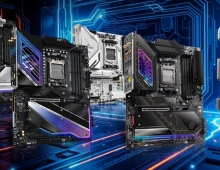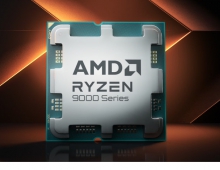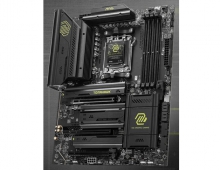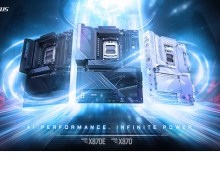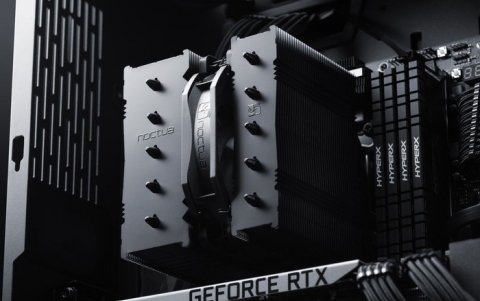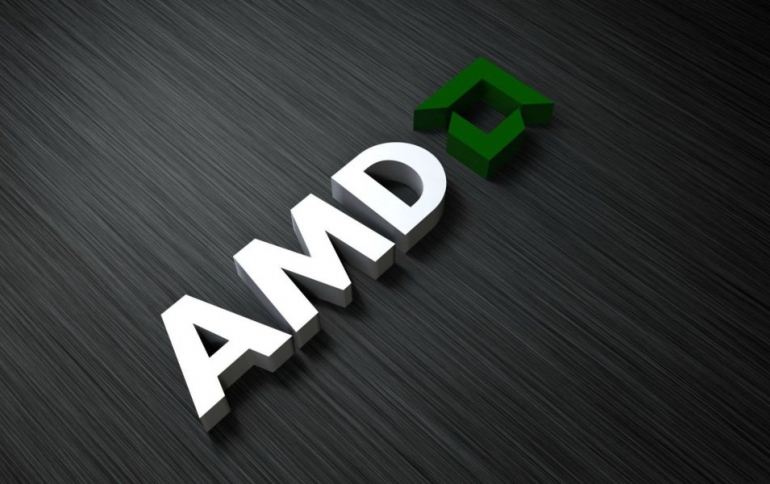
AMD Adds Beema And Mullins APUs To Its 2014 Mobile Chip Roadmap
AMD announced its 2014 mobile Accelerated Processing Unit (APU) product roadmap at the APU13 Developer Conference today. The roadmap now includes the APUs codenamed "Mullins" and "Beema", which are projected to deliver more than 2x the performance-per-watt of the previous generation "Temash" platform.
The low-power APUs join the previously disclosed high-performance notebook APU, codenamed "Kaveri," in AMD's 2014 mobile lineup. Designed for fanless tablets, 2-in-1s and ultrathin notebooks, the latest AMD offerings are AMD's response Intel's Bay Trail Atom chips.
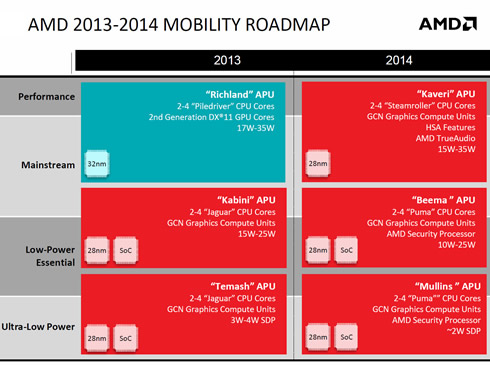
AMD Temash and Kabini used "Jaguar" cores, built on a 28nm process node. The new APUs offer two or four "Puma" CPU cores and AMD Radeon graphics on a 28nm system-on-chip (SoC).
Beema will replace Kabini, and with the change we get the AMD Security Processor (ARM Cortex-A5) and a reduction in TDP on some parts, with 10W being the minimum. Mullins does the same for Temash, only AMD uses SDP (Scenario Design Power) rather than TDP (Thermal Design Power), and the new APUs are ~2W compared to 3-4W for Temash.
AMD hasn?t disclosed clock speeds or anything else for the upcoming APUs.
Both new processor families are also the first to integrate an AMD-developed platform security processor based on the ARM Cortex-A5 featuring ARM TrustZone technology for enhanced data security. They are also the first to integrate an AMD-developed platform security processor based on the ARM Cortex-A5 featuring ARM TrustZone technology for enhanced data security. The technology is designed to provide a Trusted Execution Environment to help protect against malware and viruses, as well as providing new ways to deal with user authentication, payment processing, etc.
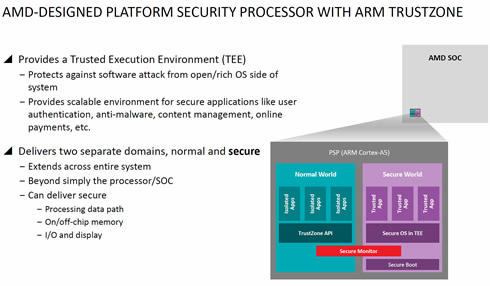
The new APUs also support Microsoft InstantGo for faster wake times and to ensure data such as email actively refresh in standby. Formerly called Connected Standby, InstantGo allows your laptop to wake up from sleep mode periodically to pull down network updates ? email, live tiles, etc. It also allows devices to go from deep sleep to "on" in under 500 milliseconds.
AMD also talked about DockPort, which sounds like an alternative to Thunderbolt that basically combines DisplayPort 1.2 with USB 3 into a single cable. The slide below is showing how a single cable could drive three external displays along with a variety of peripheral devices, but we'll have to wait and see how many companies are willing to support DockPort.
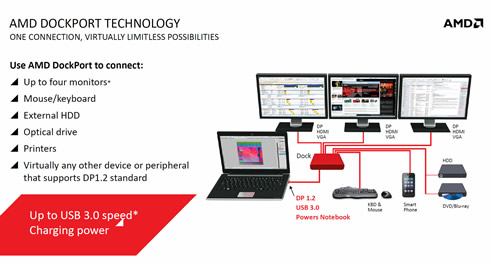
The new processors are planned to launch in the first half of next year and AMD will demonstrate them at CES 2014 as part of a full suite of AMD products.

AMD Temash and Kabini used "Jaguar" cores, built on a 28nm process node. The new APUs offer two or four "Puma" CPU cores and AMD Radeon graphics on a 28nm system-on-chip (SoC).
Beema will replace Kabini, and with the change we get the AMD Security Processor (ARM Cortex-A5) and a reduction in TDP on some parts, with 10W being the minimum. Mullins does the same for Temash, only AMD uses SDP (Scenario Design Power) rather than TDP (Thermal Design Power), and the new APUs are ~2W compared to 3-4W for Temash.
AMD hasn?t disclosed clock speeds or anything else for the upcoming APUs.
Both new processor families are also the first to integrate an AMD-developed platform security processor based on the ARM Cortex-A5 featuring ARM TrustZone technology for enhanced data security. They are also the first to integrate an AMD-developed platform security processor based on the ARM Cortex-A5 featuring ARM TrustZone technology for enhanced data security. The technology is designed to provide a Trusted Execution Environment to help protect against malware and viruses, as well as providing new ways to deal with user authentication, payment processing, etc.

The new APUs also support Microsoft InstantGo for faster wake times and to ensure data such as email actively refresh in standby. Formerly called Connected Standby, InstantGo allows your laptop to wake up from sleep mode periodically to pull down network updates ? email, live tiles, etc. It also allows devices to go from deep sleep to "on" in under 500 milliseconds.
AMD also talked about DockPort, which sounds like an alternative to Thunderbolt that basically combines DisplayPort 1.2 with USB 3 into a single cable. The slide below is showing how a single cable could drive three external displays along with a variety of peripheral devices, but we'll have to wait and see how many companies are willing to support DockPort.

The new processors are planned to launch in the first half of next year and AMD will demonstrate them at CES 2014 as part of a full suite of AMD products.

